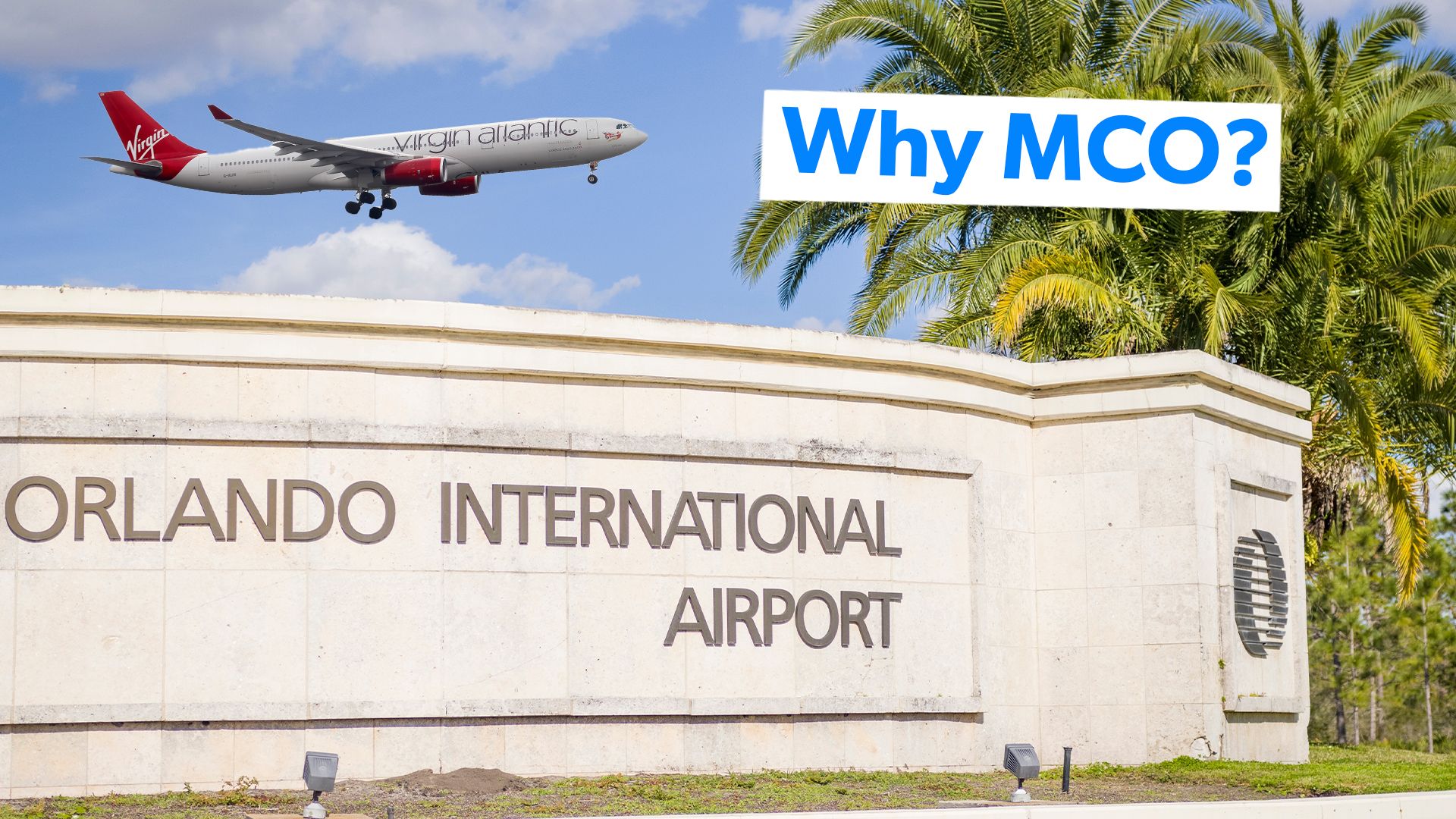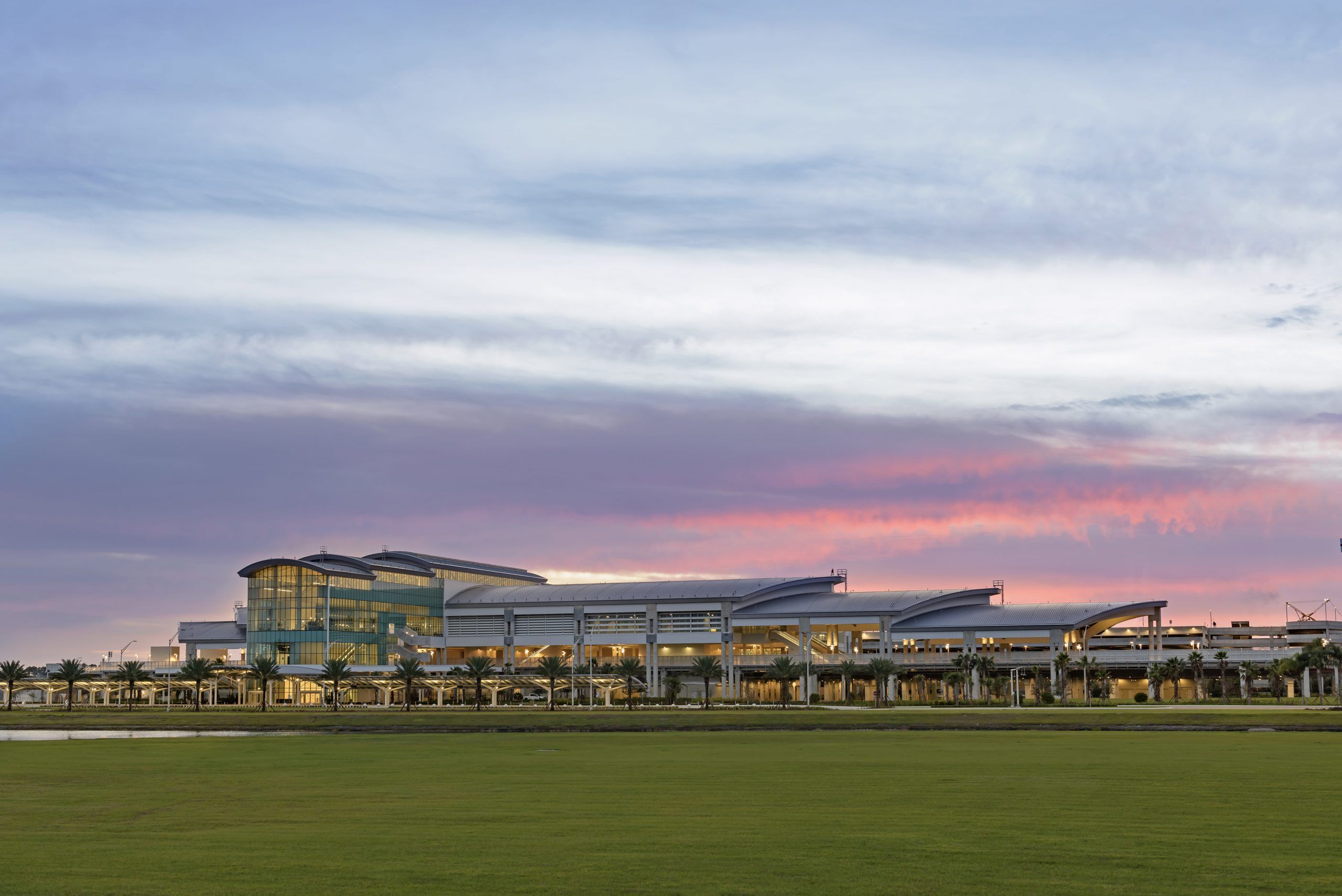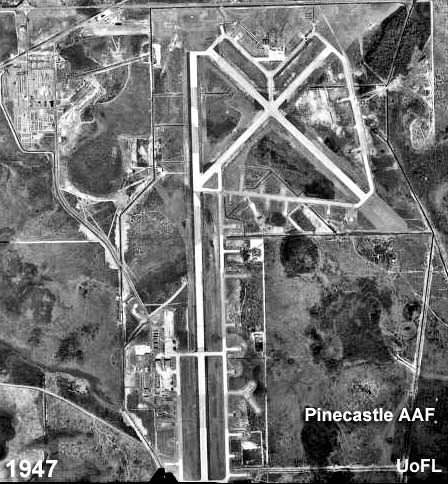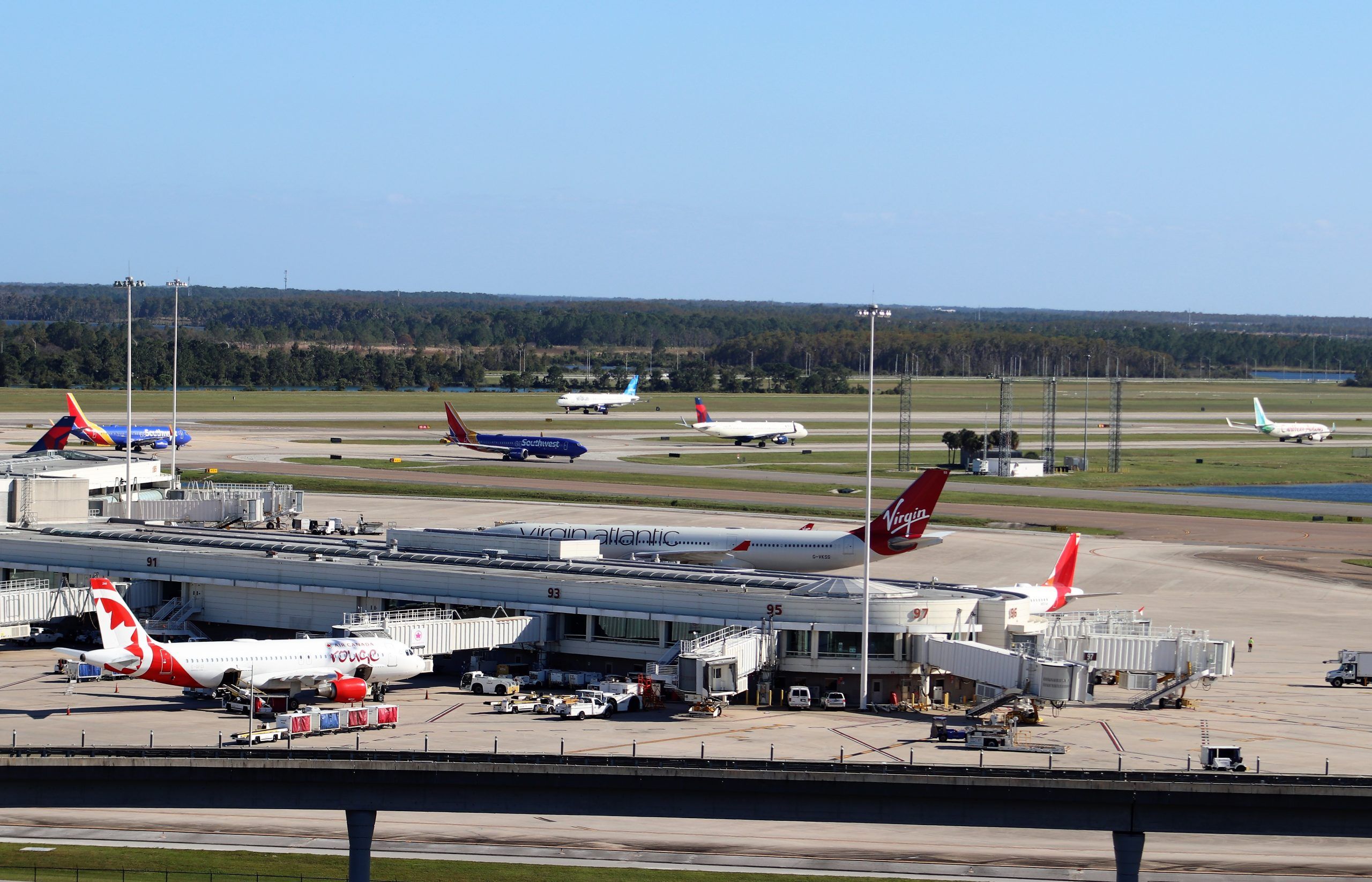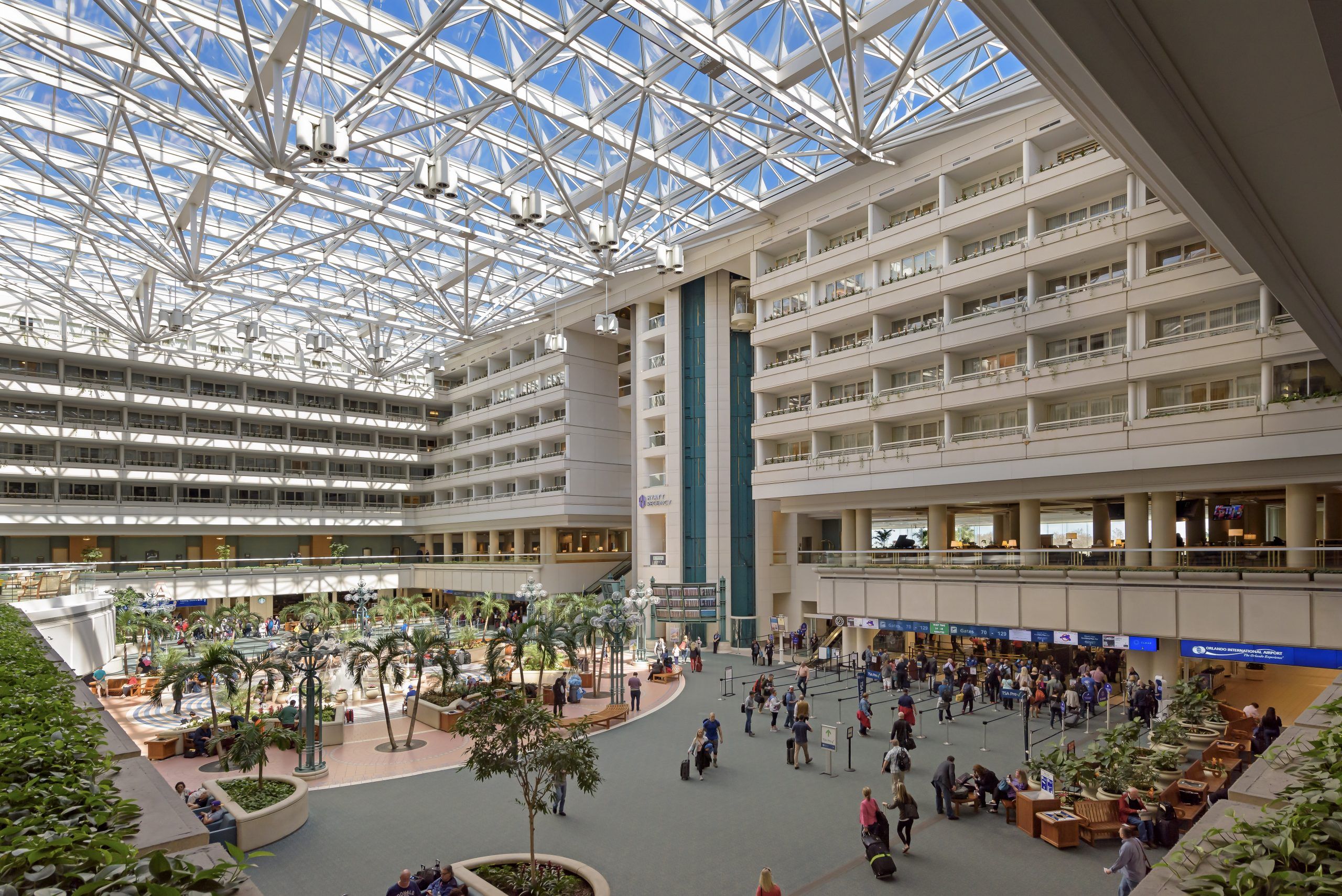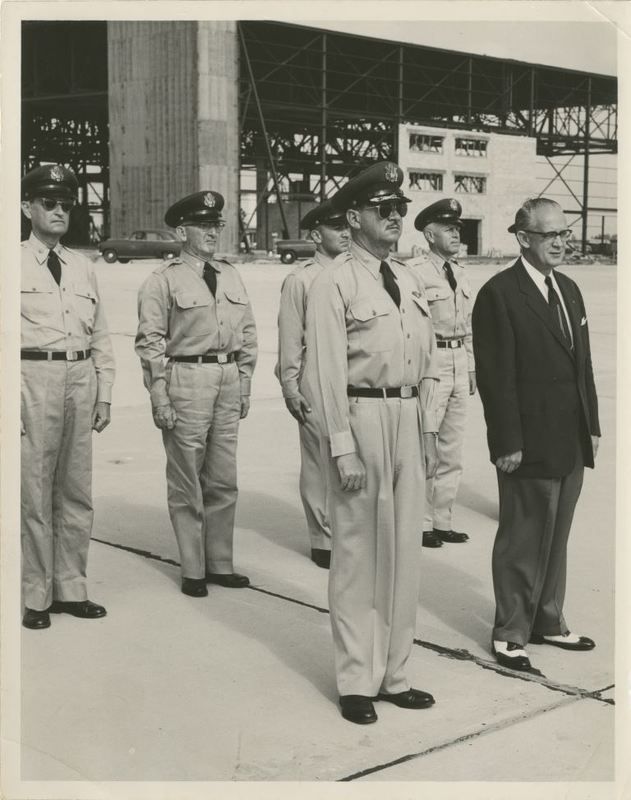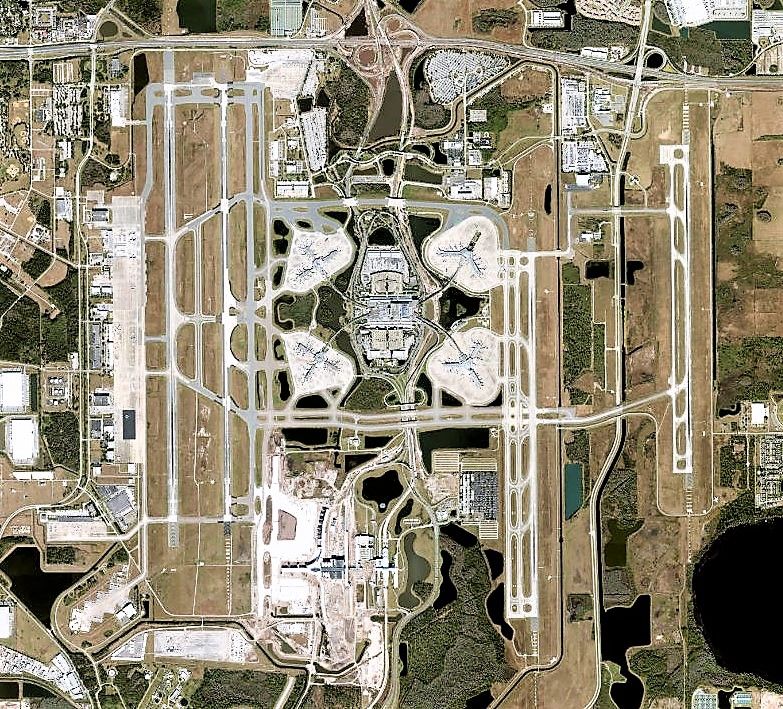Orlando International Airport
‘s officially accepted IATA code is MCO. Despite this, there is a common confusion; people frequently refer to it by its initials, OIA. MCO derives from the airport’s former name, McCoy Air Force Base, which was decommissioned in 1975 and transformed into the civilian airport known today.
The airport was originally Pinecastle Army Airfield, a US military airfield. In 1958, the airfield was renamed McCoy Air Force Base in honor of a former pilot, Colonel Michael Norman Wright McCoy, who was killed during a bombing and navigation competition. Now that the airport has been renamed again to Orlando International Airport, the IATA code has remained MCO to continue honoring Colonel McCoy.
Photo: Orlando International Airport
The history of Pinecastle Army Airfield
In the early 1940s, Pinecastle Army Airfield was constructed to serve the US military. During World War II and the Korean War, the airfield provided crucial support and resources. As the years progressed, in the 1960s, both civilian and military flights began operations. The conclusion of the Vietnam War was a new era for the facility. The Air Force base was officially decommissioned, leading to a significant reduction in military base operations. This period of transformation paved the way for the airfield’s next chapter.
Photo: US Geological Survey via University of Florida Archives
In 1976, the airfield gained international operation and was renamed Orlando International Airport. The early 1980s saw a further evolution of the airport’s focus. By 1981, a strategic decision was made to prioritize passenger flights, reshaping its identity and operations. This shift was marked by the opening of its first passenger terminal, the MCO Terminal Complex, a $300 million project that stood as a testament to the airport’s plans for growth and its commitment to providing a gateway to the region for travelers from around the world.
Through these transformations, from a military airfield to an international airport focusing on passenger service, Orlando International Airport has continually adapted and evolved, reflecting the changing needs and dynamics of aviation and travel over the decades.
Orlando International Airport today
Present-day MCO has one central terminal building with four connected concourses. With four runways and a helipad, the airport handled over 57 million passengers last year. Its central location is within a two-hour drive of more than 60% of Florida’s population, supporting the region’s dynamic economic growth.
Since 2017, Orlando International Airport has been the busiest international hub in the state of Florida, surpassing Miami International Airport
International Airport. The airport’s property comprises 11,605 acres, making it the fourth-largest commercial airport by landmass in the country.
Photo: Orlando International Airport
Hyatt Regency Orlando International Airport
Travelers who have visited MCO might have noticed the unique feature of having a hotel right inside the airport. This hotel is strategically placed before the security checkpoint of MCO, so its lobby is accessible to both travelers looking to check in for their flights and non-travelers who might just be accompanying someone or enjoying the airport’s facilities.
Photo: Orlando International Airport
The hotel is located between Terminals A and B. The hotel offers many amenities designed to cater to the needs of its diverse clientele. Guests can enjoy spectacular runway views, which provide a fascinating glimpse into the operations of one of the busiest airports in the world, all from the comfort of their hotel. The hotel houses several restaurants and bars, offering a variety of dining options. One of the hotel’s standout features is its rooftop pool. This gives guests a place for fun and relaxation and serves as a unique vantage point for the airport’s bustling activities.
Photo: Hyatt
McCoy’s Bar & Grill
Honoring Colonel McCoy, McCoy’s Bar & Grill is located on the lobby level of MCO Airport. The restaurant offers fresh, locally sourced ingredients, producing a globally inspired menu.
Photo: Orlando International Airport
B-52 Memorial Park
The B-52 Memorial Park features a B-52 Stratofortress, Air Force Serial Number 56-0687, from the Strategic Air Command. The aircraft was once assigned to the 306th Bomb Wing of the McCoy Air Force Base.
Built in 1956, the bomber served 28 years until it retired in 1984. Its final flight was from the 7th Bomb Wing at Carswell AFB in Fort Worth, Texas, to the former McCoy AFB in 1984.
Colonel Michael Norman Wright McCoy
Colonel Michael Norman Wright McCoy, who was the commanding officer at Pinecastle Air Force Base, tragically lost his life during a Boeing B-47 Stratojet flight demonstration in 1957. The aircraft experienced a critical failure due to a defective wing and crashed north of Orlando. In tribute to Colonel McCoy’s legacy, Pinecastle Air Force Base was renamed McCoy Air Force Base. The base remained operational until it officially closed in 1974.
Photo: Orlando Remembered Exhibit, Orlando City Hall
In summary
Travelers continue to call Orlando International Airport using the wrong IATA code. MCO was originally Pinecastle Army Airfield before being renamed McCoy Air Force Base in 1958 to honor Colonel Michael Norman Wright McCoy, who died in a flight demonstration. Transitioning from a military to a civilian and military facility post- Vietnam War
, the airport gained international status. It adopted its current name in 1976, though it retained the MCO code in tribute to Colonel McCoy.
Photo: Orlando International Airport
Today, MCO is a central hub, the busiest international airport in Florida, and the fourth-largest in the US by landmass. It has a central terminal, four concourses, and facilities like the Hyatt Regency Hotel and the B-52 Memorial Park, which commemorate its rich history.

